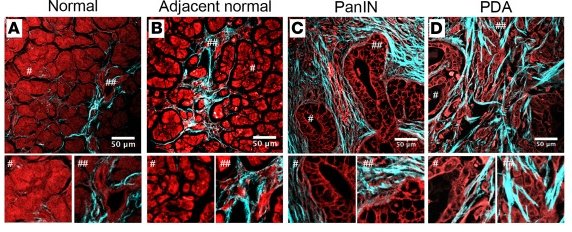Stromal architecture directs early dissemination in pancreatic ductal adenocarcinoma

April 4, 2022 — A new study led by Professor Paolo Provenzano demonstrates that patterns surrounding cancerous cells, known as extracellular matrix architectures, regulate early invasions that can seed metastases. Importantly, these cells can arise from early lesions that give the appearance of being pre-cancerous, or benign.
A biomarker for early disease
This results in early dissemination from histologically premalignant lesions and continual invasion from well-differentiated disease. It also suggests that key patterns in solid tumors known as tumor-associated collagen signatures can serve as a biomarker to aid in the pathologic assessment of early disease.
Researchers showed this in both murine and human pancreatic ductal adenocarcinoma, an extremely metastatic and lethal disease.

The potential of stroma-targeting strategies
In addition to defining mechanisms that can lead to early cancer spread, the study showed that pancreatitis, which can be a precursor to pancreatic cancer, results in a sort of environmental memory by producing invasion-conducive architectures, thus priming the stroma prior to malignant disease.
Using live tumors and analysis in a novel microfluidic-derived microtissue platform, the authors demonstrate decreased invasion following inhibition of focal adhesion kinase, which also decreases metastasis.
Targeting focal adhesion kinase or other strategies to reengineer and normalize tumor microenvironments may have roles not only in very early disease, but also for limiting continued dissemination from unresectable disease. Likewise, it may be beneficial to employ stroma-targeting strategies to resolve precursor diseases such as pancreatitis in order to remove stromal architectures that increase risk for early dissemination.
JCI Insight published the study, which featured several BME coauthors: Professor David Wood and PhD alumni Arja Ray, Mackenzie Callaway, and Alexandra Crampton.